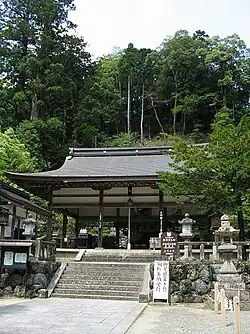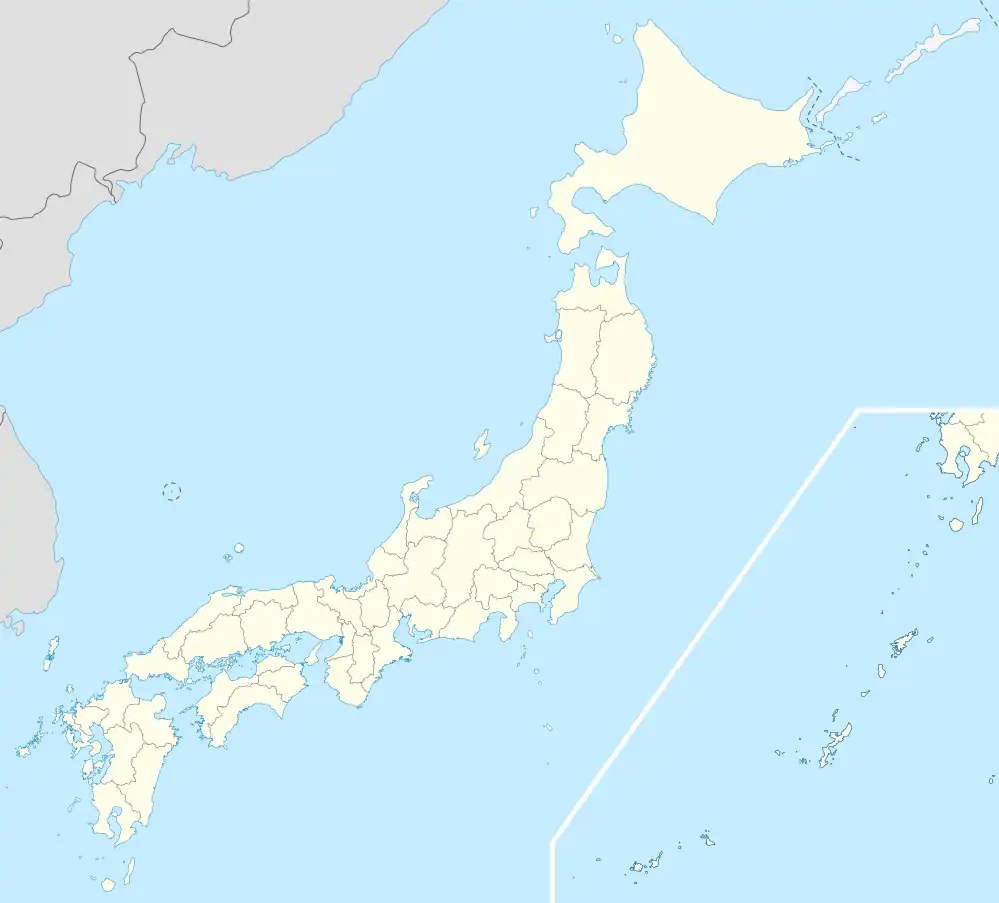Niukawakami Shrine
| Niukawakami Shrine 丹生川上神社 | |
|---|---|
 | |
| Religion | |
| Affiliation | Shinto |
| Deity | Mizuhanome |
| Festival | 16 October |
| Location | |
| Location | 968 Ōaza Omura Higashiyoshino Yoshino District Nara prefecture |
 Shown within Japan | |
| Geographic coordinates | 34°23′25″N 135°59′11″E / 34.39028°N 135.98639°E |
| Architecture | |
| Style | Nagare-zukuri |
| Date established | 675 |
| Website | |
| www | |
Niukawakami Shrine (丹生川上神社, Niukawakami Jinja), also known as Nibukawakami Jinja, is a Shinto shrine located at Higashiyoshino in Nara, Japan.
History
The shrine became the object of Imperial patronage during the early Heian period.[1] In 965, Emperor Murakami ordered that Imperial messengers were sent to report important events to the guardian kami of Japan. These heihaku were initially presented to 16 shrines including the Niukawakami Shrine.[2]
From 1871 through 1946, the Nibukawakami Jinja was officially designated one of the Kanpei-taisha (官幣大社), meaning that it stood in the first rank of government supported shrines.[3]
Composition
The shrine has two sub-shrines
See also
Notes
- ^ Breen, John et al. (2000). Shinto in History: Ways of the Kami, pp. 74-75.
- ^ Ponsonby-Fane, Richard. (1962). Studies in Shinto and Shrines, pp. 116-117.
- ^ Ponsonby-Fane, Richard. (1959). The Imperial House of Japan, pp. 124.
References
- Breen, John and Mark Teeuwen. (2000). Shinto in History: Ways of the Kami. Honolulu: University of Hawaii Press. ISBN 978-0-8248-2363-4
- Ponsonby-Fane, Richard. (1962). Studies in Shinto and Shrines. Kyoto: Ponsonby Memorial Society. OCLC 399449
- ____________. (1959). The Imperial House of Japan. Kyoto: Ponsonby Memorial Society. OCLC 194887